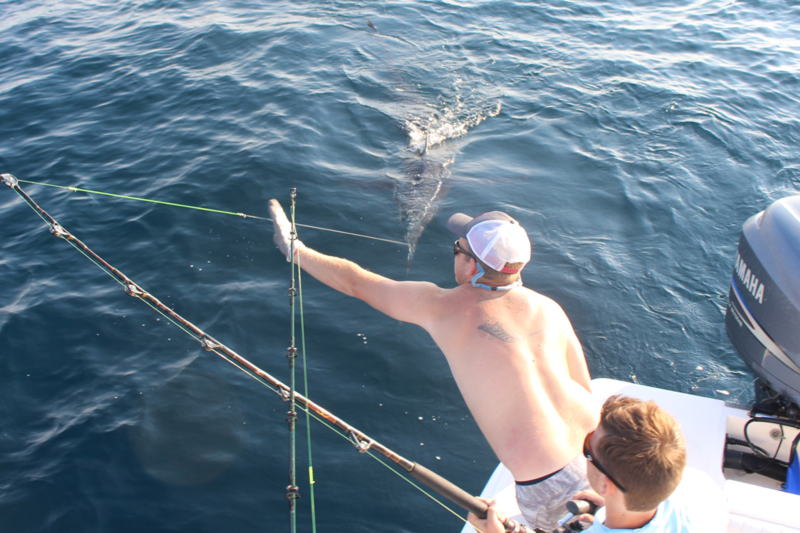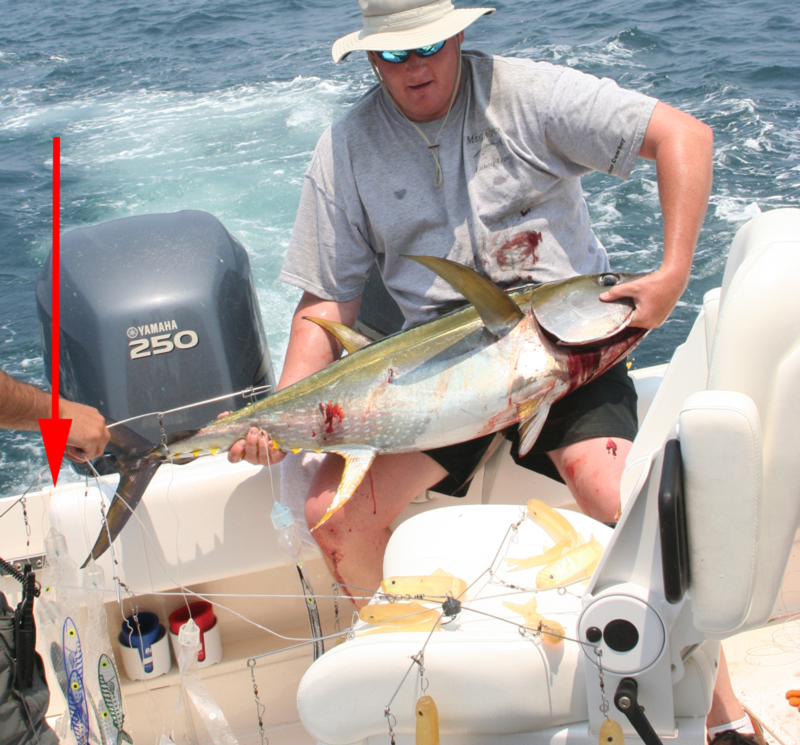Presented by Sirius XM Marine
Many private boat owners who plan to fish offshore jump on a charter for the learning experience. That’s a very good move, but it also can lead to making some big mistakes — because on your 26-foot center console, you simply can’t play the game the same way as from the cockpit of a 60-footer. You have a number of disadvantages on a small boat in a big ocean, and if you try to apply all the tactics identical to those used by the charter fleet, you’re not likely to come out ahead. Sorry, but life ain’t fair. You can, however, even the odds a bit (though not entirely, by any stretch of the imagination), with these seven measures.

1. Utilize your biggest advantage over the big boys: speed. Not only are most center consoles faster than the big convertibles, many of the professional captains won’t run hard and fast simply because they don’t want to burn off 100 gallons of fuel to get to a different spot. On top of that, they generally have far larger spreads that take longer to wrap up and re-deploy. That gives you a lot more flexibility, so use it. When the bite shuts down head for greener pastures. Snag that extra half-hour of fishing time at the end of the day. Instead of trolling up the edge when nothing is happening, run from one canyon to another.
2. Spool up with lines of different colors. Sure, it’ll look a bit odd with a mix of green, blue, and yellow streaming behind the boat. But this makes up for one of your big disadvantages, because on those big boats the captain can look down from the bridge and get a much better view of the spread. When fish cross the lines, they can see it happening and shout out instructions to the mate. You, on the other hand, are squinting to try to figure out if line A is over or under line B, whether line C is involved in the mess, and if line D is about to cross from the other direction. Wait a sec — is that daisy chain caught on line A attached to line B or line F?! Who the heck can tell? By the time you figure it all out there’s a good chance you’ll have a full-blown tangle or the fish will be ancient history. With different color lines, however, it will be a lot easier to spot each individual one, where and how they cross each other, and which rod they’re attached to.
3. Get all the tech you possibly can in your corner. Naturally, that includes harnessing satellite data, and you’ve heard us talking about SiriusXM Fish Mapping before in this series. In the interest of full disclosure we’ll point out (again) that yes, they are FishTalk advertisers (thanks!). But that doesn’t change the fact that if you can pull down the latest SST data, spot major weedlines and chlorophyll fronts from space, and get color-coded Fish Mapping developed by bona fide oceanographers, you’re probably going to catch more fish. Remember, the guys on those big boats have some heavy-duty electronics that the average recreational boat can’t come close to matching. But SiriusXM can be piped into most modern MFDs and the cost is minimal — to say the least — when compared to some of the goodies found on those battlewagons. (Learn more about the various Fish Mapping features and functionality). Added bonus: having SiriusXM aboard also gets you satellite weather, adding to the small boat safety margin.
4. Add a dredge to your spread. Generally speaking the big boats don’t pull dredges unless they’re specifically fishing for billfish, because they don’t have to. The deep harmonics put out by their huge props do a good job at pulling in fish, and they often have so many lines out that adding a dredge may do more harm than good. Small outboard boats, however, don’t have the same propeller harmonics and they certainly don’t attract fish in the same way. The visual appeal added by a dredge does a great job at bringing in fish, and you’ll discover that a naked ballyhoo running 10 or 15 feet behind one will often be the hottest offering of the day for tuna, mahi, and billfish alike.

So, what type of dredge should you pull? Opinions vary, but mylar strip dredges are easy to deploy from a cleat and collapse down for svelte stowage in a small boat. Drag one for a few trips and the theory that fish like ‘em will be confirmed, when you see how many pin-holes have appeared in the aft end of the strips.
5. Designate a mate. One of the monster advantages professional boats have is that they enjoy the presence of a professional mate. Naturally, you can’t give cousin Bubba the job and expect him to perform like a seasoned pro. There are a number of tasks, however, that any half-competent angler can take care of (and that the captain can’t do when running the boat) if he or she is given the job at the beginning of the day. And ensuring that these specific tasks are covered will result in catching more fish. The most important ones include:
- Reeling up and checking the lines one by one at least every hour and more like every 15 minutes if there are weeds in the area, to make sure all lures and baits are functioning properly and free of trash.
- Reeling up rigged ballyhoo that aren’t visible from the cockpit, holding them in the water next to the boat, and ensuring that they’re swimming properly (upright, plenty of wiggle, and no spinning; we’re assuming here that you don’t have a bridge or tower and can’t get into an elevated position to see the baits while they’re out in the spread). Best practice is to initially deploy your entire spread, then check the ballyhoo one by one and adjust as necessary.
- Changing at least one rig/lure/skirt an hour if nothing is getting hit.
- Moving to the highest position on the boat and scanning the surface for flotsam, when possible.
- Immediately replacing/re-deploying lines the second a caught fish has been secured; it’s critical to get the spread reset ASAP while you know you’re around fish.
- Jigging lines (excluding splash/spreader bars and birds) the moment a line gets hit when tuna fishing. This should happen whether the fish is hooked or not; immediately following any strike your priority should be developing it into multiple hook-ups, and jigging lines will definitely improve the odds of that happening.
6. When out-classed by a behemoth of the deep and fishing on a center console, shift to the bow for the battle. This is another advantage you have over those battlewagons — it’s easy to move 360-degrees around the boat with a fish on the line. And if that fish out-classes your gear you’ll need to chase it down. Forget about backing into a sea the way the big boys do, which can be downright dangerous in a small outboard boat. Instead, shift forward and do the fighting from the bow so the captain can safely give chase. Note: if and when you get the fish close, you’ll want to move back to the cockpit for the end-game.
7. Live by the creed “less is more.” Don’t even think of trying to pull 12 or 14 lines like some of those big boats. You’ll end up with a cluttered spread that tangles often, so many rods and rigs that you’ll be tripping over them, and will have an impossible task for a relatively small crew when you need to clear lines quickly. In truth, a six-line spread is usually plenty to get the job done and on most small boats, eight lines is pushing the envelope.
BONUS TIP: Don’t fight Mother Nature. Naturally, when it comes to picking your days, safety is the number-one consideration. But beyond that, it’s simply harder to fish effectively when the deck is constantly pitching and rolling and spray is flying off the bow as you troll. For a small boat angler it’s usually wise to keep your powder dry and bide your time until a better weather-window presents itself.
Catch up on Parts I and II of our Offshore series - Part I: Prepping for the Offshore Fishing Season and Part II: Location, Location, Location
